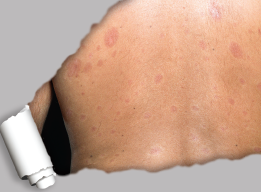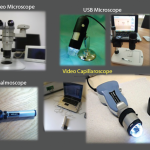
Skin plaques in systemic sclerosis.
SPL / Science Source
In September 2024, the U.S. Food & Drug Administration (FDA) granted orphan drug designation to AISA-021 (cilnidipine), a fourth-generation calcium channel antagonist with an increased selectivity for the N-type calcium channel.1 This designation is for the agent’s development as a treatment for systemic sclerosis (SSc).
The orphan drug designation is given to treatments for rare diseases. More than 7,000 rare diseases affect more than 30 million people in the U.S. Many rare conditions are life-threatening, and most have no treatments.2
SSc is a rare disease that affects approximately 175,000 Americans and has the highest mortality rate of any of the autoimmune diseases.3 It is a chronic, immune-mediated connective tissue disease with multi-organ involvement. Key features include Raynaud’s phenomenon and skin fibrosis, along with vasculopathy and specific autoantibodies. Digital ulcers, gastrointestinal dysmotility, cardiac impairment, interstitial lung disease and/or pulmonary arterial hypertension may occur with varying frequency and explain the high burden of disease and mortality.4
About half of patients die from SSc within 12 years of their initial diagnosis, and 95% of SSc patients experience symptoms of Raynaud’s phenomenon, which are described as the most debilitating symptoms.1 Raynaud’s phenomenon is characterized by decreased blood flow, causing severe hand and finger pain and tingling. Cardiac, renal and vascular diseases contribute to morbidity and mortality in SSc patients.
Currently, no FDA-approved drugs exist to treat SSc or Raynaud’s phenomenon.
In the past, the FDA has worked to improve the availability of treatments for rare diseases by evaluating information from product sponsors, determining if treatments meet the criteria for certain incentives and administering grants to fund research. The orphan drug designation provides financial incentives, including tax credits for qualified clinical trials, exemption from user fees and the potential for seven years of market exclusivity after FDA approval.
The Research
The results of an ongoing, phase 2 study of 60 patients were submitted to the FDA and demonstrated improvements in several end points in patients with SSc treated with cilnidipine compared with placebo. These improvements included symptoms of overall disease severity, disease-related pain, gastrointestinal dysfunction, skin ulcers, disability and breathing symptoms, as well as Raynaud’s phenomenon symptoms.1
After a preliminary review by an independent data safety committee, this ongoing study showed a lower severity of side effects and a lower incidence and improved efficacy for preventing Raynaud’s phenomenon attacks than published reviews of currently used SSc therapies. Agents used for the treatment of patients with SSc include oral immunosuppressive agents, such as cyclophosphamide and mycophenolate mofetil for lung and skin manifestations; methotrexate and azathioprine for skin manifestations, inflammatory arthritis and myositis; and hydroxychloroquine for skin manifestations. Glucocorticoids are not routinely recommended due to the risk of precipitating scleroderma renal crisis.

